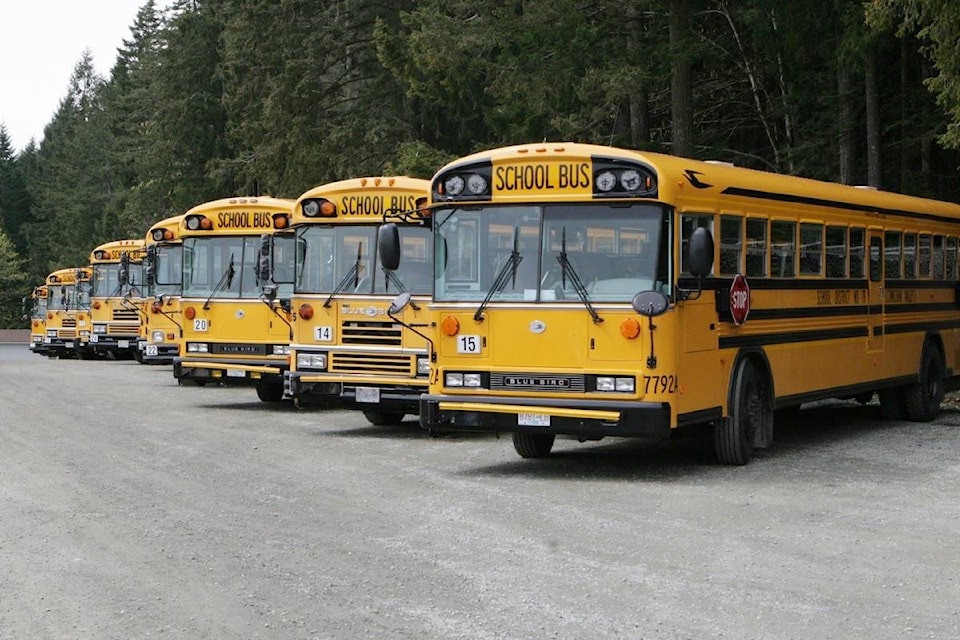School bussing is about to make a big turn on Haida Gwaii.
Starting in September, the Haida Gwaii School District will run its own fleet of brand-new school buses with one less route.
The move is expected to save the district about $200,000 a year and make it far easier to offer local field trips.
“It’s the doors it opens for greater things to happen in schools and on field trips that really excites us,” says Superintendent Dawna Day.
Rising student transportation costs have been driving the school district crazy. Without a change, bussing would have cost $605,000 next year.
“That price kept going up and up and up,” said Day.
“It seemed to be pretty much out of our control.”
As of July 1, the district will not renew its main bussing contract with First Student Canada, nor a smaller one it had with Eagle Transit to take Sandspit students from the ferry terminal to GidGalang Kuuyas Naay. The district will continue its new contract with Sandspit Community Services for bussing Sandspit students on the Moresby Island side.
Day said one big reason the school board chose to take on bussing rather than hire another contractor is that B.C.’s Ministry of Education offered new buses at no cost.
Next year the district will receive three new 76-passenger buses and one new 24-passenger bus. Future replacements will also be covered by the province.
The district will buy one extra bus as a spare, and will receive another from First Student that is designated for tsunami evacuations.
At the same time, next fall the district will cut one of its four existing bus routes, meaning students in Tlell will no longer be able to take a bus north to Port Clements Elementary, but only a southbound bus to Sk’aadgaa Naay.
Under the new system, Haida Gwaii bus drivers will become district employees.
“We can bring them into the CUPE union, which is good news for drivers in that there is more of a living wage for them,” Day said.
The district will buy a pair of cars for the drivers so that they can leave the buses at school during the day, making them more available for field trips.
Using a bus for field trips used to cost the school district up to $1,400 per day. But with its own fleet, the cost should fall to $300 or $400.
“Outdoor experiential learning is so important here, and access where students can experience more access to outdoor, culturally appropriate activities based on celebrating Haida education is so necessary,” said Day.
“This is really going to open doors for us to be able to increase those opportunities.”
All the new school buses will be outfitted with security cameras — a first on Haida Gwaii — which Day said would help address security concerns that have come up over the years. GPS receivers will also allow staff to track the buses’ location, speed, and stops.
Last year, a report by the local Co+Host facilitators’ collective looked at ways the district could save money on bussing, and also at options for more public transportation on Haida Gwaii.
While the report noted that some parents opposed the idea, it did look at the idea of using school buses as part of a shared public bus system. Sandspit Community Services has already started to do that on the bus that takes high school students to and from the Alliford Bay ferry terminal.
But for the moment, Day said the school district is saying no to shared public use.
“One of the main reasons for us right now is this is a big venture for us, brand new, and we want to see how manage it on our own and go from there,” she said.
“Who knows what will happen in the future, but at this point in time we’re saying that’s not an option.”
Note: This story has been corrected to reflect the fact that the new bus routes will not be decided on distance alone.
